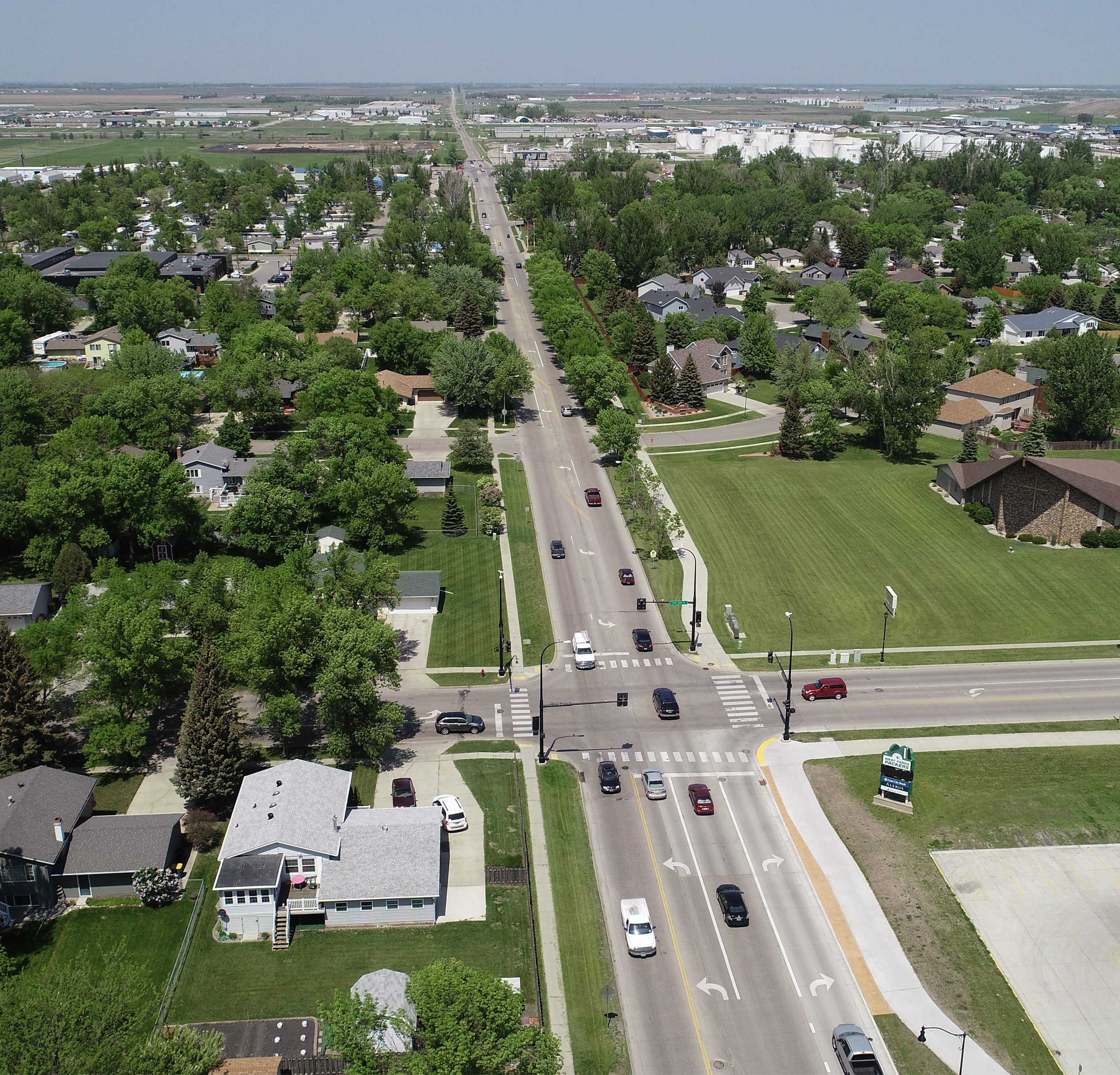
West Fargo 9th Street Corridor Study
West Fargo 9th Street Corridor Study Final Report
West Fargo 9th Street Corridor Study - Appendices
Project Background
The West Fargo 9th Street Corridor Study, extending from 13th Avenue East to 12th Avenue NE, will evaluate different alternatives for management of existing and future traffic flow; with discussion on alternative land configurations, access management, intersection control options, alternative intersection designs, bicycle and pedestrian connectivity, transit needs, and potential impacts to intersecting streets.
The 9th Street corridor is an important north-south transportation corridor through the City of West Fargo. The corridor currently runs from the city’s northern boundary north of 12th Avenue NE to an interchange at Interstate 94, before transitioning into Veterans Boulevard. The roadway is currently classified as a minor arterial, with average daily traffic ranging from 3,035 to 14,210 vehicles per day within the study area.
From 12th Avenue NE to Main Avenue, the corridor is a rural two-lane roadway and is mostly industrial and agricultural, with an at-grade crossing of the BNSF Railroad (two mainlines) between Main Avenue and 7th Avenue NE. The City of West Fargo has designated the section between Main Avenue and the city’s northern boundary as part of its truck route network.
From Main Avenue to 7th Avenue East, the corridor is bordered by predominantly low-density and manufactured housing, with areas of institutional development including the West Fargo City Hall and Police Department as well as West Fargo High School just south of 7th Avenue E. Metro Area Transit (MATBUS) serves a portion of this section of the corridor with its Route 20. Neighborhoods adjacent to or near the corridor include Main Avenue, East Main, Brookwood, Berger, Sommerset, Meyer, and North Industrial Park.
The corridor is bisected by two important minor arterials and one collector roadway: 7th Avenue NE, 12th Avenue NE, and 7th Avenue E respectively. The corridor also intersects Main Avenue and 13th Avenue, both principal arterials, with average daily traffic between 14,155 and 17,255 vehicles per day each.
Project Objective
The objective of the West Fargo 9th Street Corridor Study is to identify a recommended set of potential short- and long-term solutions for current and anticipated travel demand that are best suitable to adjacent land uses along the corridor.
The recommendations to the West Fargo City Commission and community may include: number and width of lanes, vertical and horizontal alignments to determine right-of-way widths, intersection configurations including turn lanes and traffic control, potential railroad crossing improvements, utility relocations, and future bicycle, pedestrian, and transit facilities.
